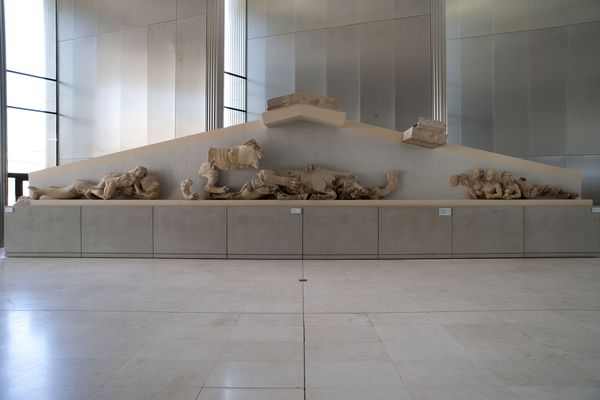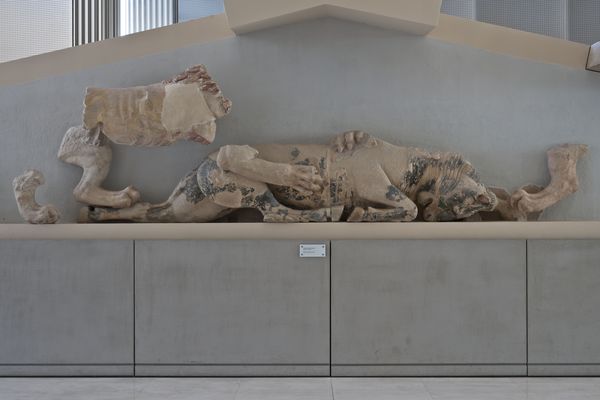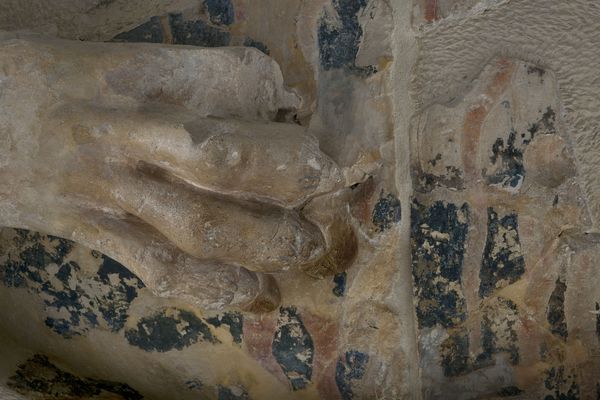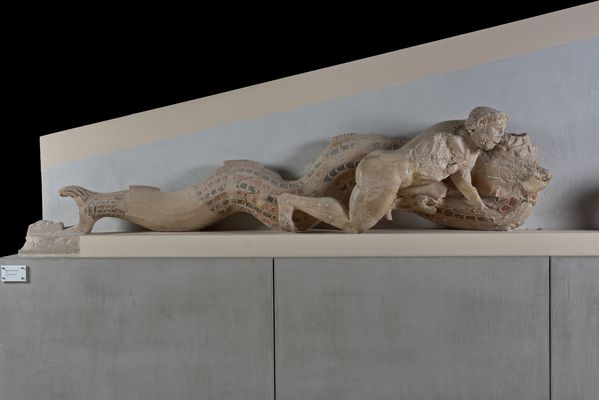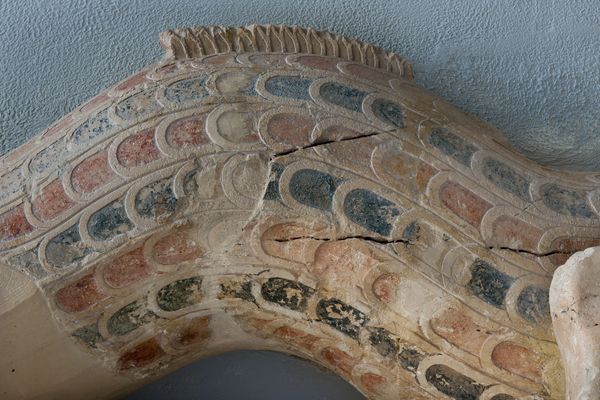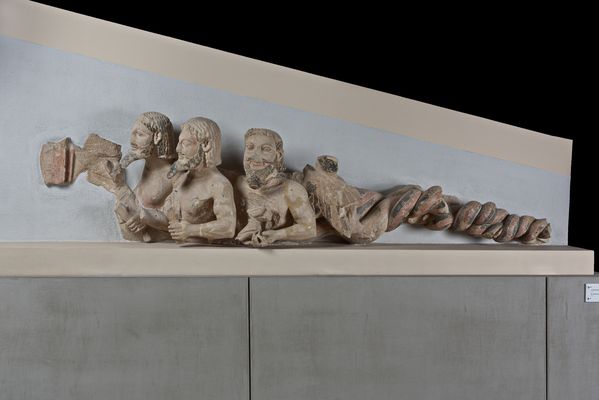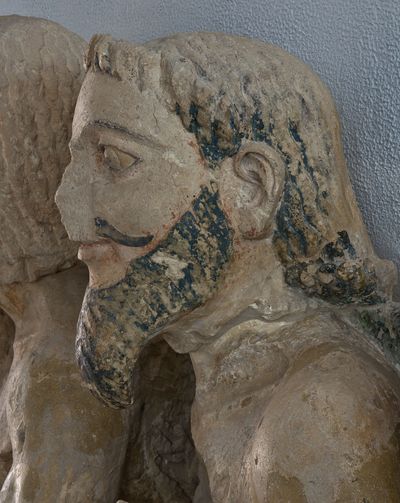Hekatompedon. West pediment
Inventory number
Ακρ. 3
Artist
Attic workshop
Category
Architectural sculpture
Period
Archaic Period
Date
Around 570 BC
Dimensions
Height: 1.44 m
Length: 14.1 m
Width: 0.66 m
Central group: 1.44 x 5.25 m
Herakles and Triton: 0.8 x 3.55 m
Three-bodied Daemon: 0.76 x 3.23 m
Material
Poros limestone
Location
Archaic Acropolis Gallery
